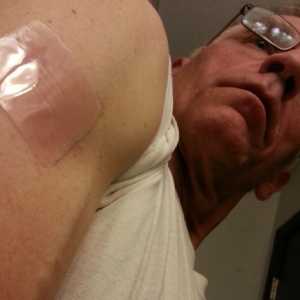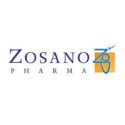Author Interviews, HIV, Pharmaceutical Companies / 16.08.2018
For Resistant HIV: Phase III Trial of Trogarzo Demonstrates Safety and Efficacy
MedicalResearch.com Interview with:
 Stanley Lewis, M.D.
TaiMed Biologics
Irvine, CA 92614
MedicalResearch.com: What is the background for this study?
Response: The phase III clinical trial was conducted to assess the efficacy and safety of Trogarzo™ (ibalizumab-uiyk) injection in patients with multidrug resistant HIV-1. The study design was approved by the FDA. Results obtained were included in the New Drug Application submitted to the FDA which approved Trogarzo™ on March 6, 2018.
The phase III, open-label study, enrolled 40 patients with multidrug-resistant (MDR) HIV-1 in whom multiple antiretroviral therapies had failed. All patients at baseline were experiencing viral failure. After a seven-day control period, patients received an intravenous 2000 mg loading dose of Trogarzo™ which was the only change made to their antiretroviral regimen. Through the 24-week treatment period of the study, patients were given a maintenance dose of 800 mg of Trogarzo™ every two weeks along with an optimized background regimen that included at least one additional fully active agent.
(more…)
Stanley Lewis, M.D.
TaiMed Biologics
Irvine, CA 92614
MedicalResearch.com: What is the background for this study?
Response: The phase III clinical trial was conducted to assess the efficacy and safety of Trogarzo™ (ibalizumab-uiyk) injection in patients with multidrug resistant HIV-1. The study design was approved by the FDA. Results obtained were included in the New Drug Application submitted to the FDA which approved Trogarzo™ on March 6, 2018.
The phase III, open-label study, enrolled 40 patients with multidrug-resistant (MDR) HIV-1 in whom multiple antiretroviral therapies had failed. All patients at baseline were experiencing viral failure. After a seven-day control period, patients received an intravenous 2000 mg loading dose of Trogarzo™ which was the only change made to their antiretroviral regimen. Through the 24-week treatment period of the study, patients were given a maintenance dose of 800 mg of Trogarzo™ every two weeks along with an optimized background regimen that included at least one additional fully active agent.
(more…)
 Stanley Lewis, M.D.
TaiMed Biologics
Irvine, CA 92614
MedicalResearch.com: What is the background for this study?
Response: The phase III clinical trial was conducted to assess the efficacy and safety of Trogarzo™ (ibalizumab-uiyk) injection in patients with multidrug resistant HIV-1. The study design was approved by the FDA. Results obtained were included in the New Drug Application submitted to the FDA which approved Trogarzo™ on March 6, 2018.
The phase III, open-label study, enrolled 40 patients with multidrug-resistant (MDR) HIV-1 in whom multiple antiretroviral therapies had failed. All patients at baseline were experiencing viral failure. After a seven-day control period, patients received an intravenous 2000 mg loading dose of Trogarzo™ which was the only change made to their antiretroviral regimen. Through the 24-week treatment period of the study, patients were given a maintenance dose of 800 mg of Trogarzo™ every two weeks along with an optimized background regimen that included at least one additional fully active agent.
(more…)
Stanley Lewis, M.D.
TaiMed Biologics
Irvine, CA 92614
MedicalResearch.com: What is the background for this study?
Response: The phase III clinical trial was conducted to assess the efficacy and safety of Trogarzo™ (ibalizumab-uiyk) injection in patients with multidrug resistant HIV-1. The study design was approved by the FDA. Results obtained were included in the New Drug Application submitted to the FDA which approved Trogarzo™ on March 6, 2018.
The phase III, open-label study, enrolled 40 patients with multidrug-resistant (MDR) HIV-1 in whom multiple antiretroviral therapies had failed. All patients at baseline were experiencing viral failure. After a seven-day control period, patients received an intravenous 2000 mg loading dose of Trogarzo™ which was the only change made to their antiretroviral regimen. Through the 24-week treatment period of the study, patients were given a maintenance dose of 800 mg of Trogarzo™ every two weeks along with an optimized background regimen that included at least one additional fully active agent.
(more…)















